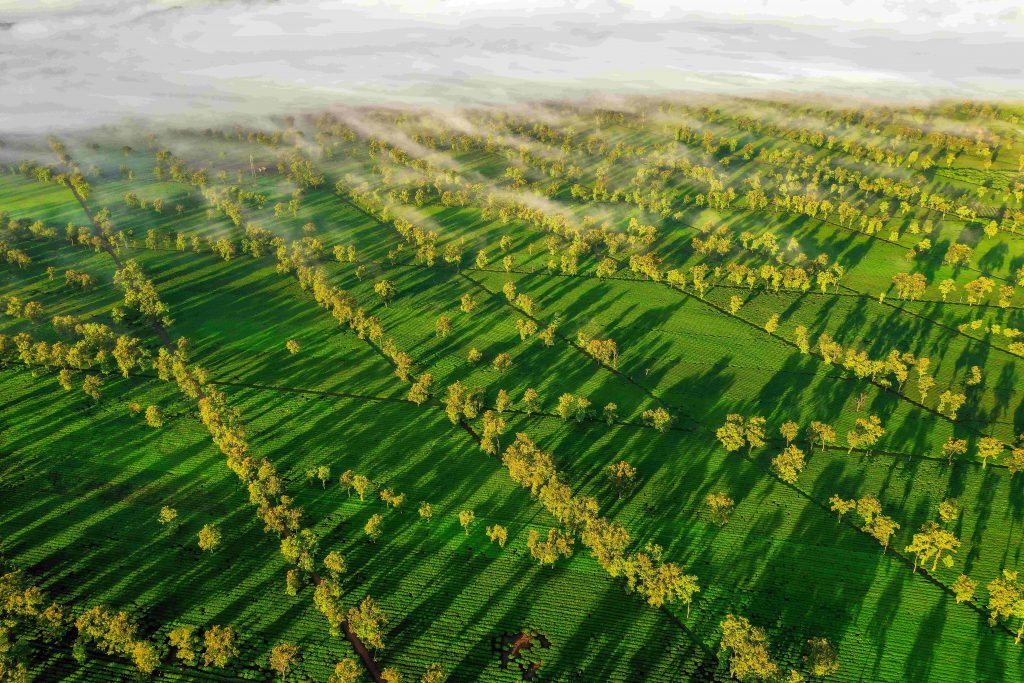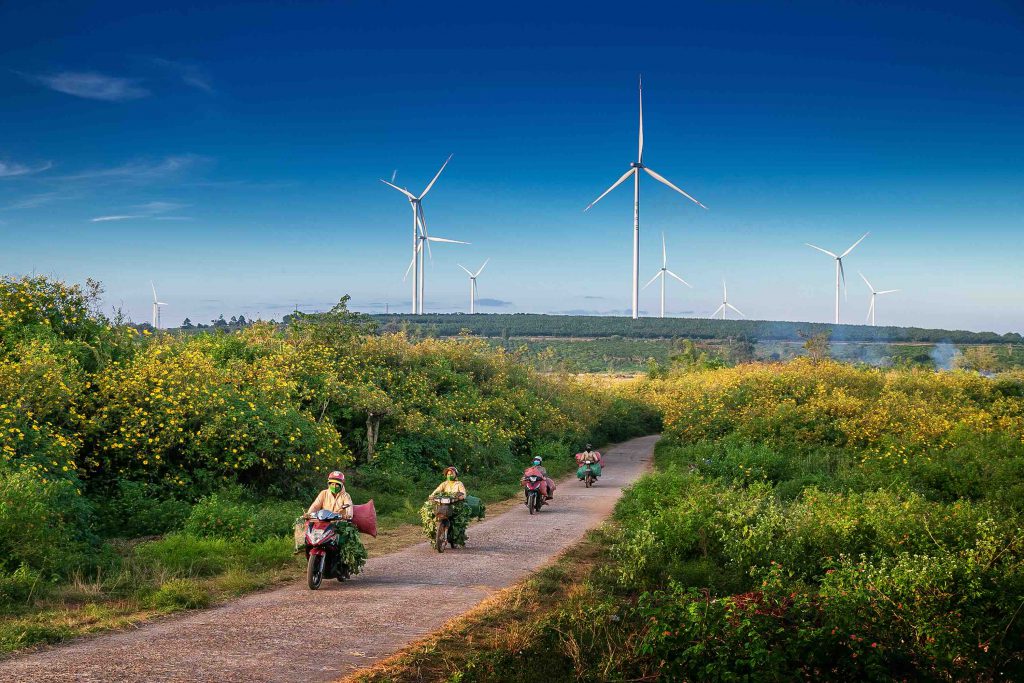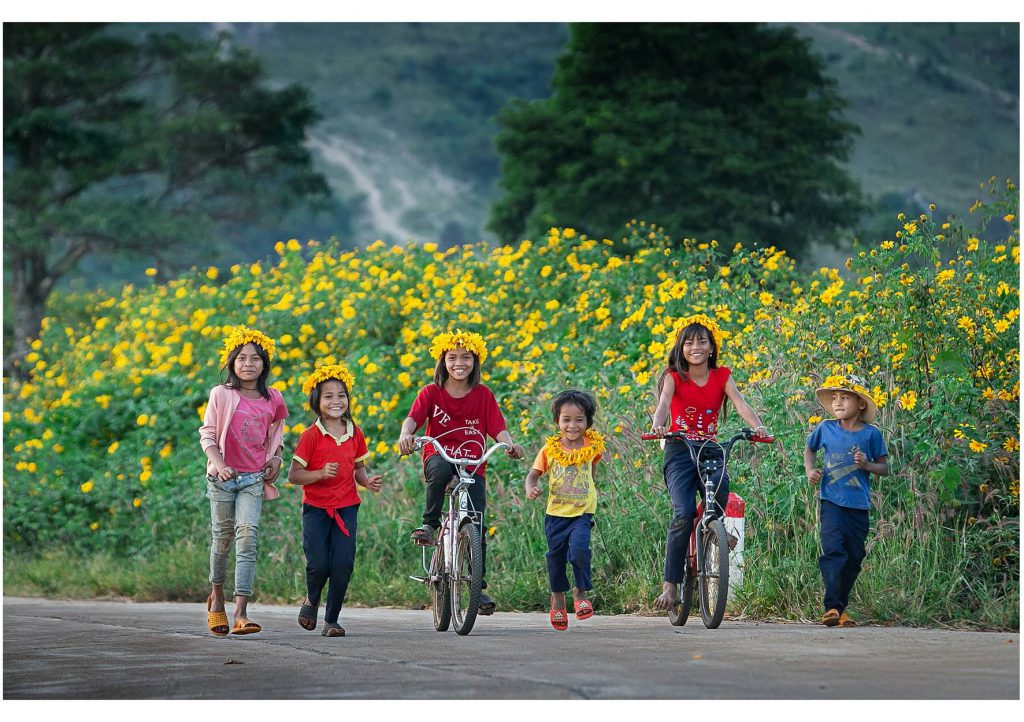Story: Nam Hoa
Photos: Quoc Nguyen
Set in the northern part of the Central Highlands, most of Gia Lai lies on the Pleiku Plateau, extending onto the Kon Ha Nung Plateau. Pleiku is often referred to as “the mountain town,” a term now used to describe the entire Gia Lai region. This “mountain town” features a tropical monsoon highland climate that is cool year-round. The weather is said to resemble “four seasons in a single day”, with spring chills in the morning, warm summer sun at noon, autumn’s gentle cool and showers in the afternoon, and the icy cold of winter at night. While it’s conventional to refer to these seasons, there are only two distinct seasons in the Central Highlands: rainy and dry. Yet autumn in the mountain town does hold unique beauty. This transitional season evokes the phrase “autumn is a poem of heaven and earth”.

Golden hues in the Highlands
It’s no exaggeration to say that golden cassia flowers herald the arrival of autumn in Gia Lai. As the heavy rains subside and the weather turns crisp and cool, the tea hills come alive with vibrant cassia blossoms. While this flower is planted throughout the region, they are especially concentrated and stunning in the Bau Can Tea Hills, located in Bau Can Commune, Gia Lai.
I arrived at this tea plantation early one morning. Vast rows of lush green tea bushes stretched out before me, curving and undulating along the gentle hillsides, interspersed with rows of golden cassia trees in full bloom. Also known as golden shower trees, cassia trees are planted to shield tea bushes from the wind.
Large clusters of elegant, five-petaled yellow flowers hang gracefully from the branches, sometimes covering the entire tree so it stands like a glowing golden orb amid the green rows of tea. In the early dawn, sunlight filters through the blossoms, illuminating the dew still clinging to the leaves and casting shimmering rays with each gentle breeze. I wandered along the flower-lined, shaded paths, breathing in the fresh air and savoring the quiet romance of this peaceful highland landscape.

Alongside the golden cassia, the wild sunflower has become another iconic flower of the Central Highlands. Originally from Central America, wild sunflowers were introduced by the French, who planted them on steep hillsides to prevent soil erosion. With their extensive root systems, these plants firmly grip the earth. Their wild, proud, yet captivating beauty, combined with a resilient and vigorous spirit, mirrors the very character of the Central Highlands people. In autumn, travelers will see many clusters of brilliant yellow wild sunflowers lining both sides of the roads, swaying in the wind like dancers giving their all in an autumn performance.
Spread over the hills and mountain slopes, wild sunflowers dot the dusty red roads with gold, making autumn in the mountain town seem brighter, warmer, and dreamier. In Bien Ho Commune, Chu Dang Ya Volcano and its environs are especially bright with wild sunflowers, which form a shimmering cloak against the vast blue sky. Here, an annual Wild Sunflower Festival attracts crowds of visitors from near and far.

Misty dawns and radiant sunsets
“High mountain town, full of mist…”
Artists have long sought to capture the beauty of Gia Lai’s mist, most famously in the song “Con chut gi de nho” (Something Left to Remember), composed by Pham Duy based on a poem by Vu Huu Dinh. Mist is common at various times of year, but in the autumn, the drifting early morning mist seems especially delicate and poetic.
Early one morning, I strolled along a small path by Bien Ho Lake, among century-old pine trees. The canopies of the towering pines intertwined to block out the sky, their thick, moss-covered trunks veiled in mist. The scene was ethereal, as if I’d stepped into a dream. At the end of the path lay the tea hill – also called Bien Ho – where rows of lush green tea plants appeared and disappeared beneath a thin veil of mist. Suddenly, Buu Minh Pagoda’s ancient three-tiered tower rose above the fog, majestic and timeless, adding to the fairy tale scene.

As the sun rose higher and dispersed the thin mist, nighttime dew still clung to the tea leaves, catching the light and sparkling like dreamy, twinkling eyes beneath the cool blue autumn sky. Beside this “fairy tale realm” lies emerald-green Bien Ho Lake – “Pleiku’s eyes” – calm as a mirror, reflecting the silhouette of Chu Nam Mountain.
When speaking of autumn in the mountain town, one must mention this season’s radiant and romantic sunsets. As the sun descends behind the western mountain range, the sky shifts from warm oranges to bluish purples, with clouds layered like dragon scales in impressive displays. Sometimes, it seems as if an invisible giant mirror at the sky’s zenith is reflecting the last rays from the west, casting a luminous, magical glow onto the eastern horizon. This spectacle is rarely seen elsewhere.
After a full day spent exploring the area’s autumn delights, in the “wintry” cold of evening, what could be better than to sample a local specialty: “double-bowl pho“? Unlike regular pho, dry ingredients are served separately from the broth and feature a different, slightly tougher type of noodle. Just imagining a steaming bowl makes me eager to return to this dreamy mountain town next autumn.










